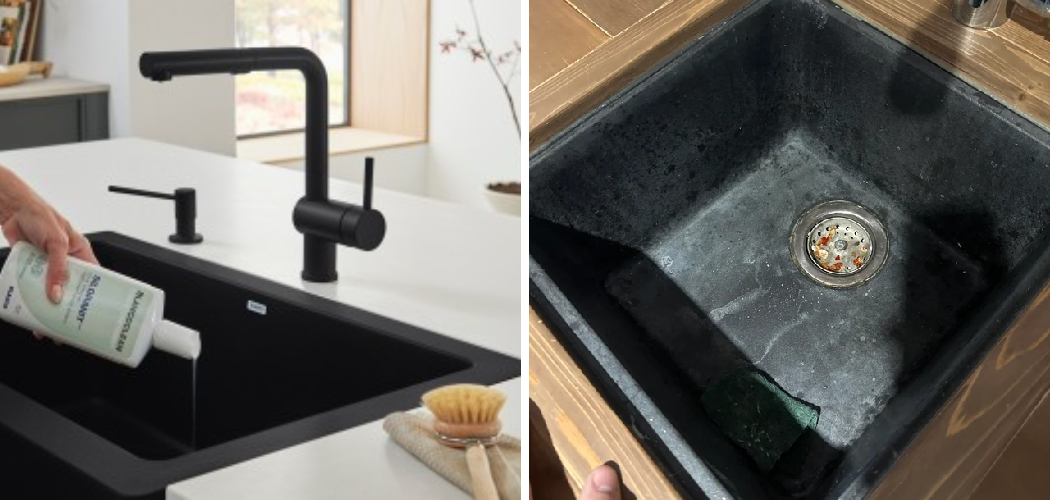Caring for composite sinks is essential to maintain their pristine appearance and prolong their lifespan. These sinks, made from a blend of natural materials and resin, offer durability and versatility in various kitchen and bathroom settings. However, improper care and cleaning methods can lead to stains, scratches, and damage over time.
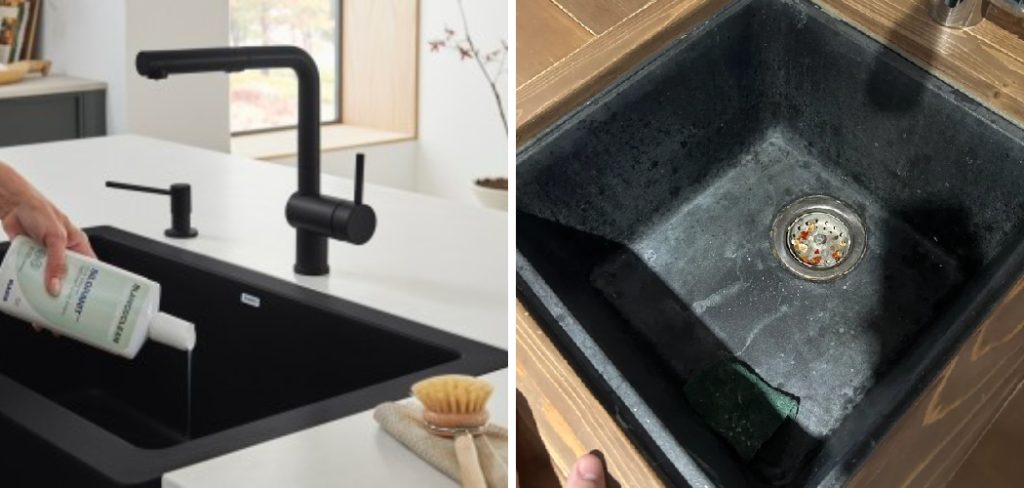
To ensure your composite sink retains its beauty and functionality, it’s crucial to follow the right maintenance routine. From everyday cleaning practices to addressing tough stains and preventing scratches, knowing how to care for composite sinks properly is key. In this article, we’ll explore a range of tips, techniques, and products to help you keep your composite sink looking like new.
Whether you’re a homeowner looking to maintain your kitchen’s centerpiece or a business owner aiming to preserve your investment, join us as we delve into the art of caring for composite sinks effectively.
The Popularity and Durability of Composite Sinks
Composite sinks have gained remarkable popularity in both residential and commercial settings, thanks primarily to their unmatched durability and aesthetic versatility. Unlike traditional materials, composite sinks are manufactured from a blend of natural stone and acrylic resins, offering a robustness that stands up well against the rigors of everyday use.
This unique composition not only contributes to their longevity but also provides a resistance to stains, scratches, and impacts that is superior to that of many other sink materials. Furthermore, the vast array of colors and finishes available allows composite sinks to seamlessly integrate into any design theme, from classic to modern, enhancing the overall appearance of the kitchen or bathroom.
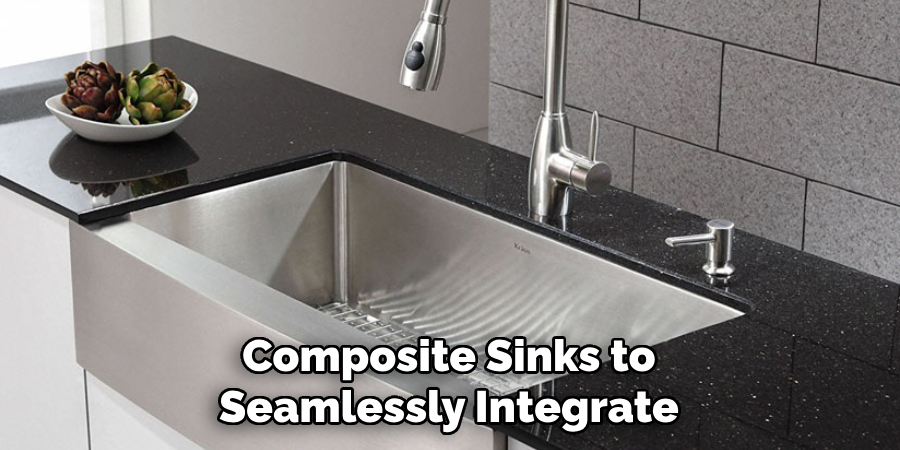
Their ability to maintain color fidelity and resist fading even under consistent exposure to harsh cleaning agents or direct sunlight is another key factor behind their widespread adoption. By combining form with function, composite sinks present an attractive option for those prioritizing durability without compromising on style.
Understanding Composite Sinks
At the heart of composite sinks’ appeal is their unique material composition. These sinks are crafted from a fusion of natural stone particles, such as quartz or granite, and high-strength acrylic resins, giving them a distinct advantage in both durability and aesthetic appeal.
This composition imbues the sinks with a rich, stone-like finish that feels premium to the touch and can withstand the demands of daily use. Unlike purely natural stone sinks, composite sinks are non-porous, meaning they resist staining and absorption of liquids, making them more hygienic and easier to clean.
The natural stone component contributes to the sink’s scratch and impact resistance, while the acrylic resins provide a level of flexibility that prevents cracking, a common issue in sinks made from solid stone or porcelain. Understanding the makeup of composite sinks is crucial for appreciating their value, as it highlights how these modern innovations are engineered for longevity, functionality, and aesthetic flexibility.
Definition of Composite Sinks and Their Composition
Composite sinks are an innovative and durable solution for kitchens and bathrooms, designed to offer the best of both worlds in terms of aesthetics and functionality. A composite sink is defined as a sink made from a blend of natural stone particles and acrylic resins, which come together to form a solid, uniform material.
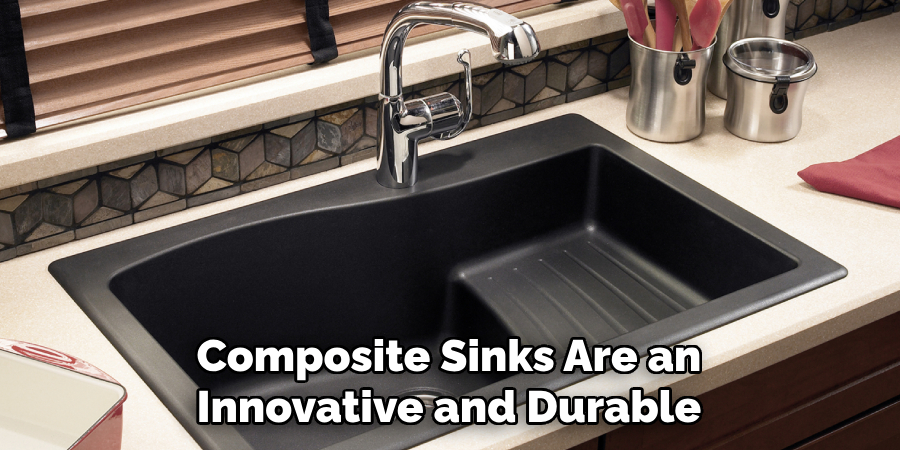
This blend typically includes finely ground quartz, granite, or other stone aggregates mixed with a polyester or acrylic base to create a non-porous, hygienic surface. The combination of natural stone grants the sinks their distinctive, luxurious appearance and inherent strength, making them resistant to scratches, dents, and chips.
Meanwhile, the acrylic resins introduce a level of flexibility and shock absorption, which helps prevent cracks and breaks from sudden impacts. This unique composition allows composite sinks to emulate the beauty and texture of natural stone while offering enhanced durability and easier maintenance, thereby providing a practical and stylish option for modern homes and commercial spaces.
Different Types of Composite Materials Used in Sink Manufacturing
When it comes to the manufacturing of composite sinks, there are primarily two types of materials that are commonly used, each offering unique benefits and aesthetic appeal.
Quartz Composite Sinks
Quartz composite sinks are made by combining natural quartz—one of the hardest minerals on earth—with high-quality acrylic resins. This combination results in a surface that is incredibly durable and resistant to scratches, stains, and heat.
Quartz composite sinks typically exhibit a smooth, matte finish and are available in a variety of colors to match any kitchen or bathroom aesthetic. Since quartz is a naturally occurring stone, these sinks manage to provide the look and feel of natural stone along with the added benefits of composite materials.
Granite Composite Sinks
Granite composite sinks are crafted by mixing fine granite sand with acrylic resins. This blend offers a slightly textured finish that is highly resistant to chipping, scratching, and staining.
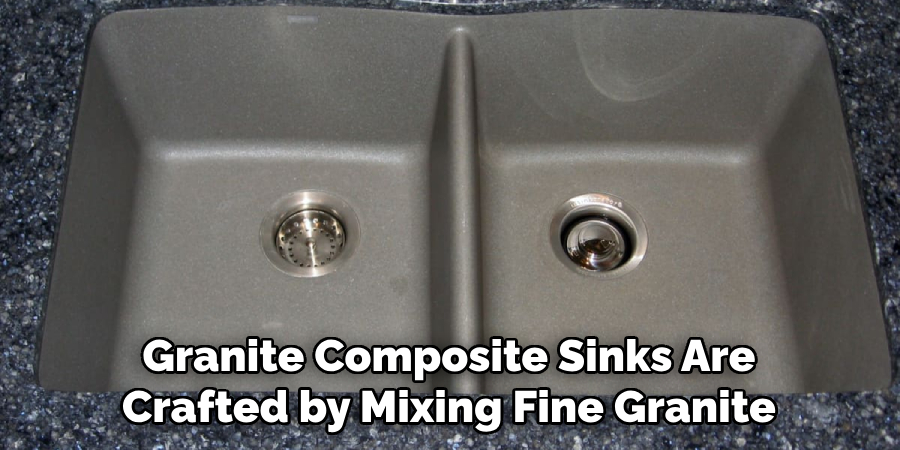
Granite composite sinks are known for their ability to retain their color without fading over time, even under direct sunlight or after exposure to harsh chemicals. These sinks are typically heavier and offer a rich, natural look that closely resembles that of real granite, making them a popular choice among homeowners seeking a combination of durability and natural elegance.
Both quartz and granite composite sinks share the advantages of being non-porous, making them hygienic options that are easy to clean and maintain. They also benefit from a uniform color throughout, which means that any scratches or signs of wear can often be easily repaired.
The choice between quartz and granite composite depends on personal preference, with considerations often based around the desired texture and color, as well as the specific properties such as heat resistance and overall durability required by the user.
Advantages of Composite Sinks Over Traditional Materials
Composite sinks offer several advantages over traditional sink materials such as stainless steel, porcelain, and solid stone, making them an increasingly popular choice for both kitchens and bathrooms.
Superior Durability
One of the primary benefits of composite sinks is their superior durability. The blend of natural stone particles and acrylic resins creates a material that is highly resistant to scratches, chips, and stains. Unlike porcelain sinks, which can crack or chip upon impact, composite sinks are designed to withstand heavy use without showing signs of wear.
Easy Maintenance and Hygiene
Another advantage is the ease of maintenance. The non-porous surface of composite sinks prevents bacteria and mold growth, making them more hygienic than traditional sinks. They do not require special cleaners; regular washing with mild soap and water is sufficient to keep them looking new.
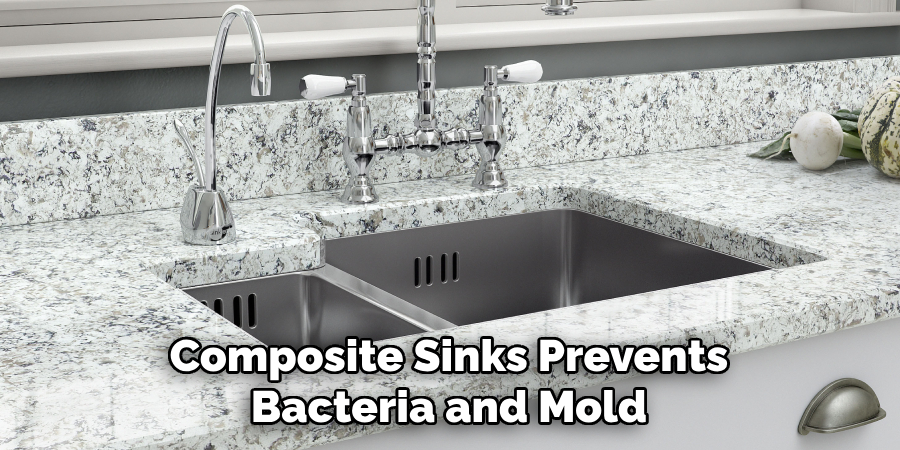
Consistent Appearance
Composite sinks also excel in maintaining their appearance over time. They are engineered to resist fading and to maintain their color even when exposed to direct sunlight or harsh kitchen elements. This is a stark contrast to stainless steel sinks, which can show water spots and fingerprints, or solid stone sinks that might wear down or discolor over time.
Aesthetic Versatility
Finally, composite sinks offer a wide range of design options. Available in various colors and finishes, they can easily match any kitchen or bathroom décor, from traditional to contemporary. Unlike stainless steel, which has a uniform look, or solid stone, which has limitations based on the type of stone, composite sinks provide homeowners the flexibility to customize their space according to their personal style.
Daily Cleaning Routine for Composite Sinks
Maintaining the luster and hygiene of composite sinks does not require laborious effort, but following a daily cleaning routine can significantly extend their pristine condition and functionality. Here is a simple yet effective daily cleaning routine:
- Rinse Thoroughly After Use: After each use, rinse the sink with warm water. This step helps to remove any food particles, preventing them from sticking to the surface and causing stains or odors.
- Apply Mild Soap: Use a soft sponge or cloth dipped in mild dish soap to gently clean the surface. Avoid using abrasive cleaners or pads that can dull or damage the finish.
- Brush Gently: For any hard-to-remove food residues, use a soft-bristled brush in gentle, circular motions. This ensures thorough cleaning without scratching the sink’s surface.
- Rinse Again with Warm Water: After scrubbing, rinse the sink thoroughly with warm water to remove any soap residue.
- Dry with a Soft Cloth: Use a soft, clean cloth to dry the sink completely. This step is important to prevent water spots and mineral build-up from hard water.
- Weekly Deep Cleaning: Once a week, it’s beneficial to perform a deep cleaning by using a mixture of baking soda and water to create a paste. Apply this paste gently onto the surface of the sink, leave it for a few minutes, and then rinse off. This natural cleaner helps in maintaining the sink’s shine without the use of harsh chemicals.

10 Methods How to Care for Composite Sinks
1. Daily Cleaning Routine:
Implement a daily cleaning routine to keep your composite sink looking its best. Use a mild dish soap and warm water to wipe down the sink’s surface after each use. This helps prevent the buildup of dirt, grime, and stains, maintaining the sink’s cleanliness and hygiene.
2. Removing Stains and Spots:
Address stains and spots promptly to prevent them from becoming permanent. For light stains, create a paste using baking soda and water and gently scrub the affected area with a soft sponge. For tougher stains, apply a mild abrasive cleaner specifically formulated for composite sinks and follow the manufacturer’s instructions.
3. Preventing Scratches and Damage:
Protect your composite sink from scratches and damage by using cutting boards and sink mats. Avoid cutting or chopping directly on the sink’s surface, as this can leave unsightly marks and compromise its integrity. Place a sink mat in the bottom of the sink to cushion and protect it from heavy pots, pans, and utensils.
4. Dealing with Hard Water Deposits:
Combat hard water deposits and mineral buildup by regularly cleaning the sink with a solution of equal parts water and vinegar. Allow the solution to sit for a few minutes before scrubbing the sink’s surface with a soft brush or sponge. Rinse thoroughly with water to remove any residue.
5. Avoiding Harsh Chemicals:
Refrain from using harsh chemicals or abrasive cleaners on your composite sink, as they can damage the surface and dull its finish. Stick to mild, non-abrasive cleaning products that are safe for composite materials. Avoid products containing bleach, ammonia, or abrasive scrubbing agents.
6. Maintaining Sink Sealant:
Inspect the sink’s sealant periodically to ensure it remains intact and effective. Check the seams and edges of the sink for any signs of wear or deterioration. If necessary, reseal the sink using a silicone-based sealant to prevent water damage and maintain its appearance.
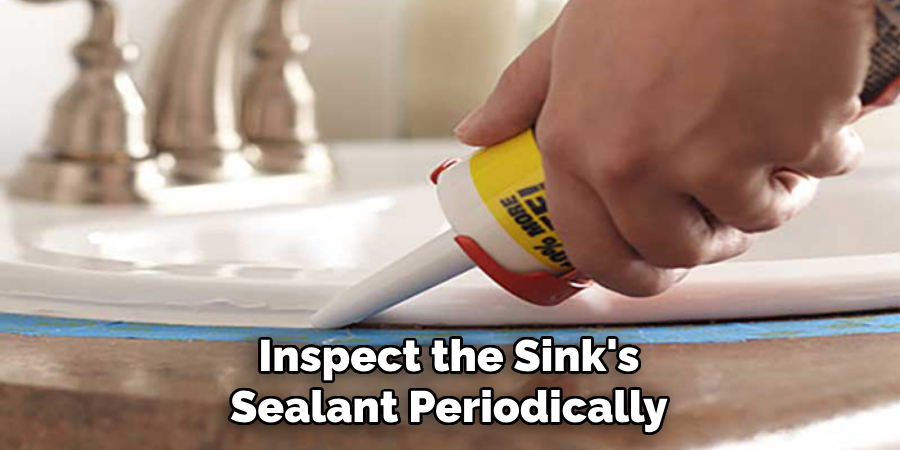
7. Preventing Heat Damage:
Protect your composite sink from heat damage by using trivets or hot pads under hot pots, pans, and dishes. Avoid placing items directly from the oven or stove onto the sink’s surface, as extreme heat can cause discoloration or warping. Always use caution when handling hot items near the sink.
8. Regular Maintenance Schedule:
Establish a regular maintenance schedule for your composite sink to ensure it remains in top condition. Schedule weekly cleanings to remove dirt and grime, monthly inspections to check for signs of damage or wear, and yearly resealing as needed. Consistent upkeep helps prolong the lifespan of your sink.
9. Gentle Scrubbing Techniques:
When cleaning your composite sink, use gentle scrubbing techniques to avoid scratching or damaging the surface. Use a soft sponge or cloth to wipe down the sink, and avoid using abrasive scrubbers or steel wool pads. For stubborn stains, apply gentle pressure and circular motions to lift dirt and grime.
10. Dry Thoroughly After Cleaning:
After cleaning your composite sink, be sure to dry it thoroughly to prevent water spots and mineral buildup. Use a clean, dry cloth to wipe down the sink’s surface and remove any excess moisture. Pay special attention to seams, edges, and corners where water may collect. This helps maintain the sink’s shine and prevents water damage over time.
Common Types of Stains Encountered
In the day-to-day usage of composite sinks, various types of stains may be encountered, each requiring specific attention for effective removal. Some of the most commonly encountered stains include:
- Food Stains: These are caused by the direct contact of food items with the sink’s surface. Ingredients such as turmeric, beetroot, and coffee can leave noticeable stains if not cleaned promptly.
- Water Spots and Mineral Deposits: Hard water can leave behind calcium and lime deposits, leading to unsightly spots and a dull appearance if not regularly cleaned.
- Rust Stains: Though composite sinks are resistant to rust, metal cookware left in the sink can sometimes leave rust stains on the surface.
- Scratches and Scuffs: While not technically a ‘stain,’ these blemishes from everyday use can hold on to dirt and grime, making the sink look dirty.
- Mold and Mildew: Moist environments can lead to the growth of mold and mildew, especially in seams or around the faucet, presenting as black or green spots.
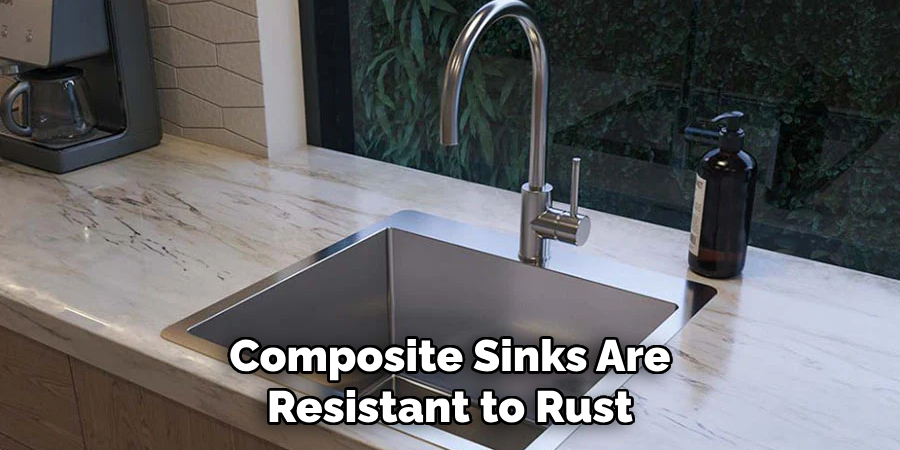
Addressing these types of stains promptly with the appropriate cleaning method will ensure the longevity and beauty of your composite sink.
Things to Consider When Choosing a Composite Sink
When in the market for a composite sink, several key aspects should be considered to ensure that you make a selection that meets both your aesthetic preferences and functional needs. Here are essential factors to keep in mind:
- Material Composition: Understand the differences between various composite materials, such as granite and quartz composites, to determine which best suits your requirements for durability, resistance to heat, scratches, and stains.
- Size and Configuration: Consider the size of your kitchen and the available space for the sink. Think about whether you need a single bowl for basic tasks or a double bowl for more versatility in kitchen activities.
- Color and Finish: Composite sinks come in a range of colors and finishes. Choose a color that complements your kitchen’s theme and a finish that aligns with your lifestyle, bearing in mind that some finishes may require more maintenance than others.
- Mounting Style: Decide between top-mount and undermount sinks, as this will affect the installation process and the overall look of your kitchen countertop. Each has its advantages in terms of aesthetics and ease of cleaning.
- Heat Resistance: Check the manufacturer’s specifications for heat resistance if you often place hot pans directly in the sink. This is crucial to prevent potential damage from high temperatures.
- Resistance to Stains and Scratches: Look for sinks with a high degree of resistance to stains and scratches, especially if your kitchen is a high-use area. This ensures the sink maintains its appearance over time.
Conclusion
In conclusion, proper care and maintenance are essential to preserve the beauty and functionality of composite sinks for years to come. By following the tips and techniques outlined in this article, you can ensure that your sink remains clean, stain-free, and scratch-resistant.
Remember to avoid abrasive cleaners and harsh chemicals that can damage the surface of the sink, and instead opt for gentle, non-abrasive cleaning solutions and soft cloths or sponges. Additionally, regular maintenance routines, such as wiping down the sink after each use and addressing spills promptly, can help prevent stains and keep the sink looking its best. Thanks for reading, and we hope this has given you some inspiration on how to care for composite sinks!

